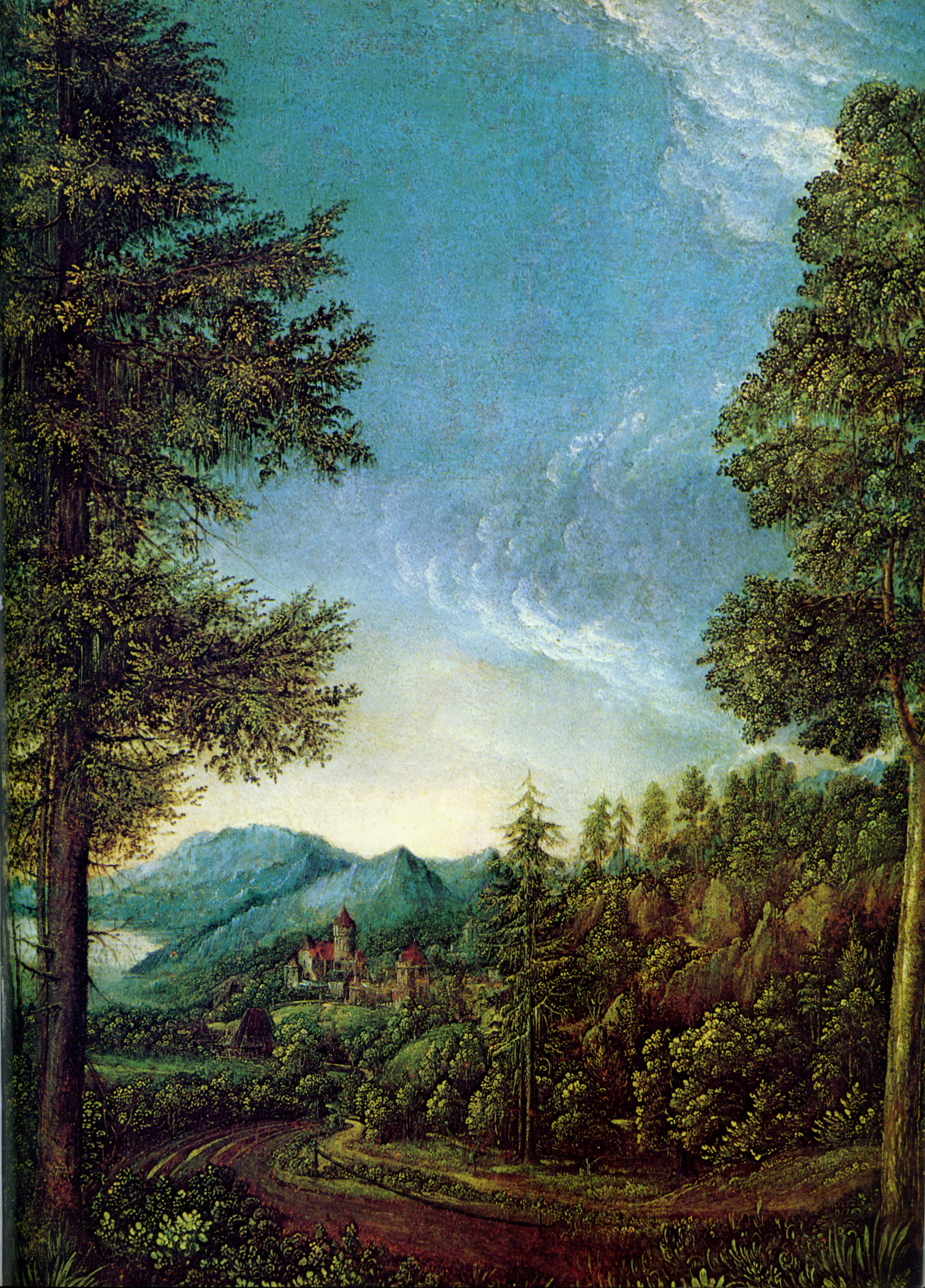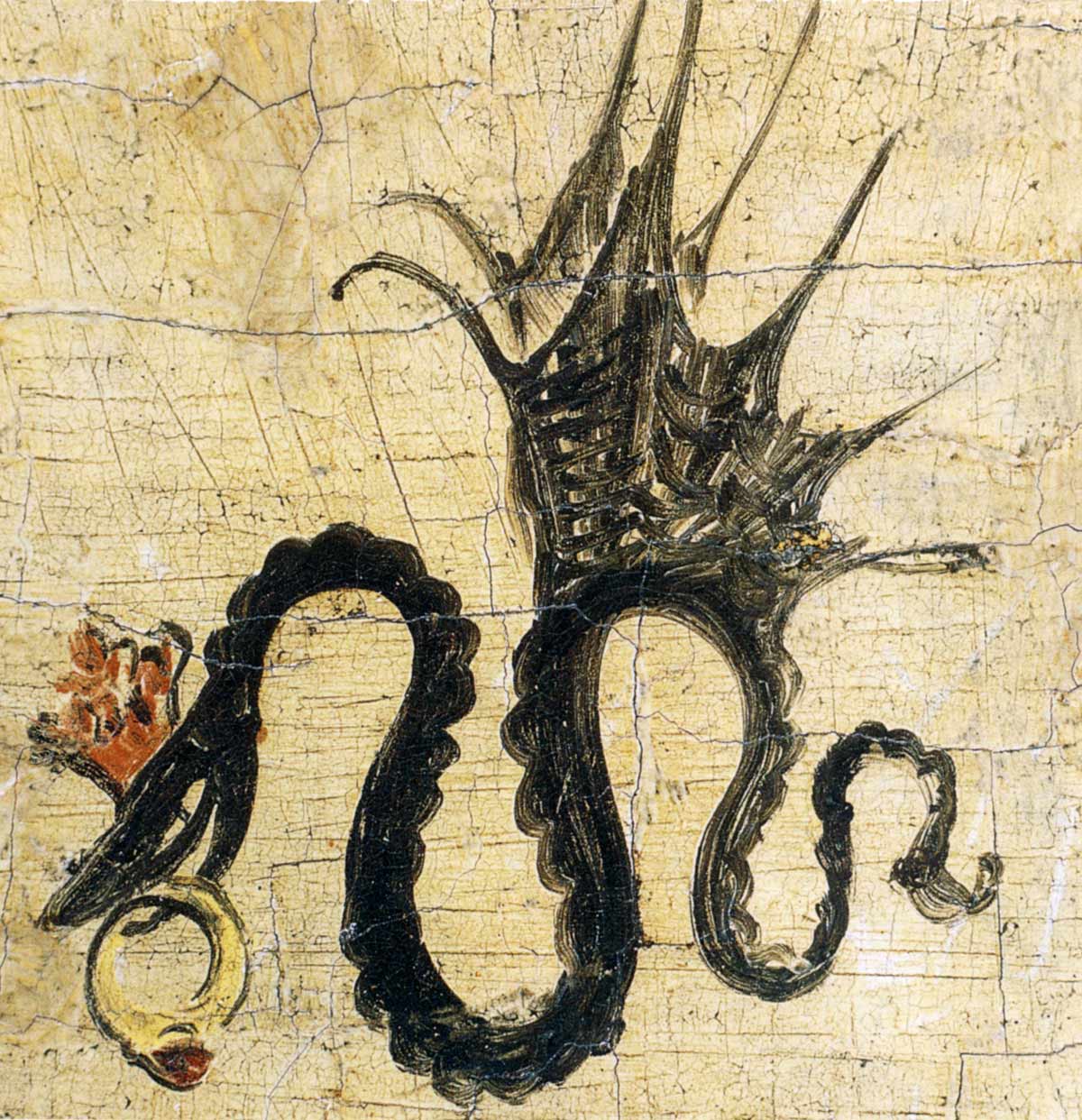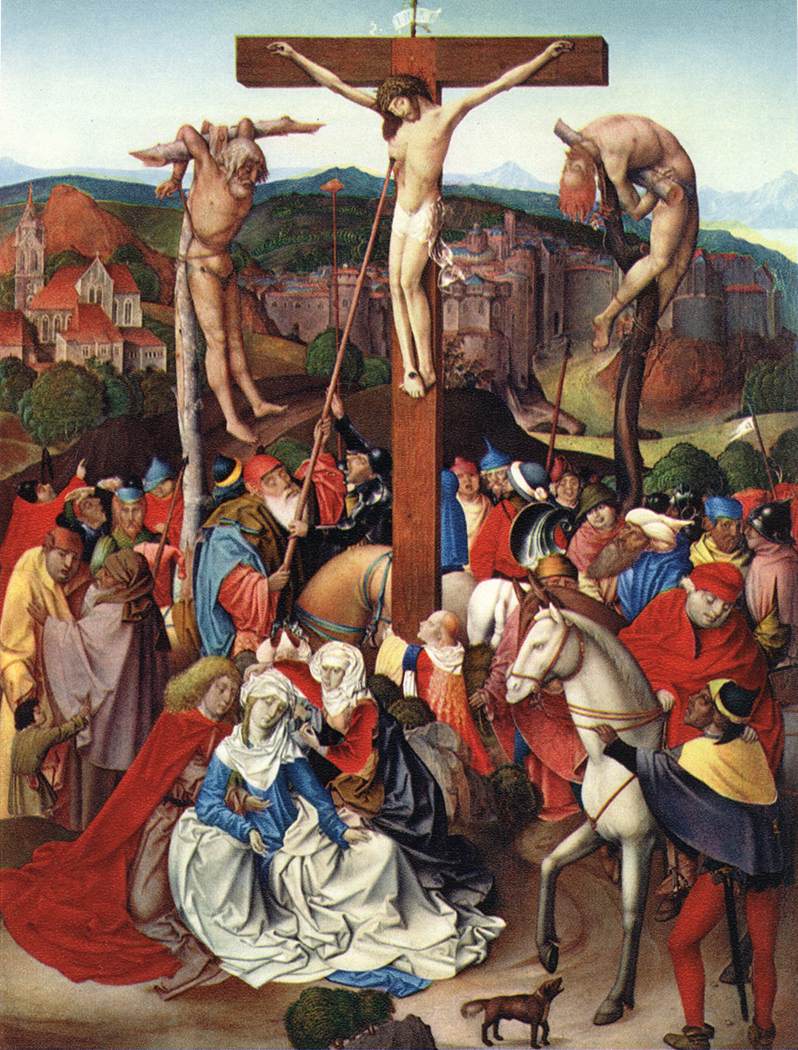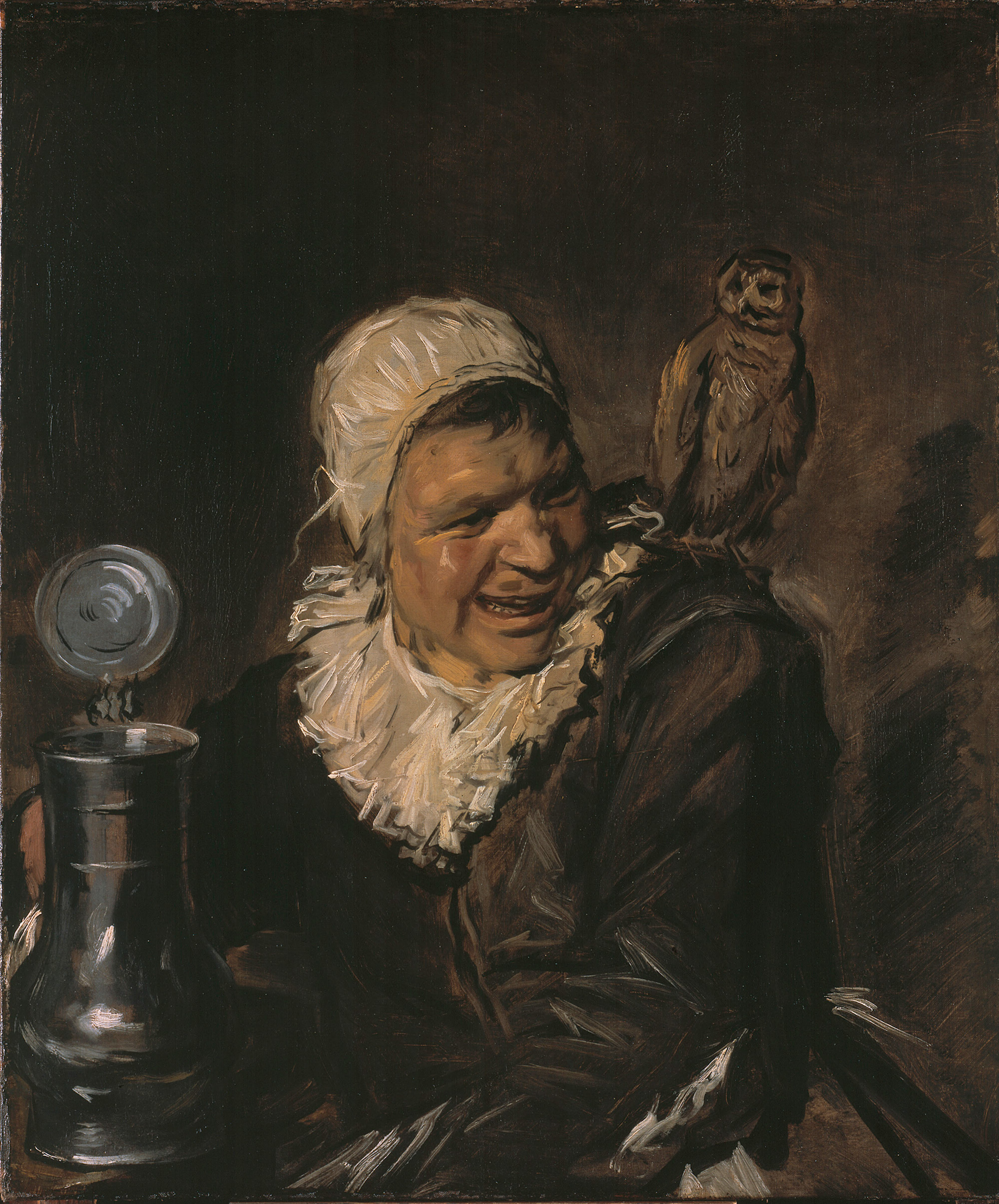|
Danube School
The Danube school or Donau school (German: ''Donauschule'' or ''Donaustil'') was a circle of painters of the first third of the 16th century in Bavaria and Austria (mainly along the Danube valley). Many were also innovative printmakers, usually in etching. They were among the first painters to regularly use pure landscape painting, and their figures, influenced by Matthias Grünewald, are often highly expressive, if not expressionist. They show little Italian influence and represent a decisive break with the high finish of Northern Renaissance painting, using a more painterly style that was in many ways ahead of its time. According to Alfred Stange, Albrecht Altdorfer and Wolf Huber were two of the central most figures within the Danube school. Altdofer was the artist that created most of the artworks associated with the Danube school. The term "Danube school" was most likely not what these groups of artist called themselves but a name that derived hundreds of years after a man ... [...More Info...] [...Related Items...] OR: [Wikipedia] [Google] [Baidu] |
Albrecht Altdorfer
Albrecht Altdorfer ( – 12 February 1538) was a German painter, engraver and architect of the Renaissance working in Regensburg, Bavaria. Along with Lucas Cranach the Elder and Wolf Huber he is regarded to be the main representative of the Danube School, setting biblical and historical subjects against landscape backgrounds of expressive colours. He is remarkable as one of the first artists to take an interest in landscape as an independent subject. As an artist also making small intricate engravings he is seen to belong to the Nuremberg Little Masters. Biography Altdorfer was born in Regensburg or Altdorf around 1480. He acquired an interest in art from his father, Ulrich Altdorfer, who was a painter and miniaturist. At the start of his career, he won public attention by creating small, intimate modestly scaled works in unconventional media and with eccentric subject matter. He settled in the free imperial city of Regensburg, a town located on the Danube River in 1505, ev ... [...More Info...] [...Related Items...] OR: [Wikipedia] [Google] [Baidu] |
James Snyder (art Historian)
James E. Snyder (1928–1990) was an American art historian, specializing in Northern Renaissance art. His ''Northern Renaissance Art'' of 1985 was a standard textbook on the subject for several decades, with a posthumous revised edition in 2005, revised by Larry Silver and Henry Luttikhuizen, being somewhat replaced by Jeffrey Chipps Smith's ''The Northern Renaissance'' of 2004. Snyder taught at Bryn Mawr College from 1964 until his retirement in 1989. He died of liver disease in August 1990, aged 62. He is not to be confused with the American museum director and art historian, James S. Snyder (born 1952). Career Born in Peoria, Illinois, Snyder graduated with a B.A. from the University of Colorado in 1952, continuing to Princeton University for an M.F.A.in 1955. There he studied under Kurt Weitzmann and it was Erwin Panofsky who suggested the Early Netherlandish painter Geertgen tot Sint Jans as a thesis subject. Still at Princeton, Snyder completed this under Robert Ko ... [...More Info...] [...Related Items...] OR: [Wikipedia] [Google] [Baidu] |
Forlivese School Of Art
The Forlivese school of art was a group of Italian Renaissance painters and other artists. Most were born in Forlì or near it in the Emilia-Romagna region of Italy. Some other artists went to Forlì to study. As a Renaissance art movement, it lasted from the 14th through the 16th centuries. Artists Forlivese artists include: *Livio Agresti * Ansuino da Forlì * Antonio Belloni * Baldassarre Carrari il Giovane * Baldassarre Carrari il Vecchio * Antonio Fanzaresi * Giuseppe Maria Galleppini * Guglielmo da Forlì *Melozzo da Forlì * Livio Modigliani * Giovanni Antonio Nessoli * Francesco Menzocchi * Guglielmo degli Organi *Marco Palmezzano Marco Palmezzano (1460–1539) was an Italian painter and architect, belonging to the Forlì painting school, who painted in a style recalling earlier Northern Renaissance models. He was mostly active near Forlì. Biography Palmezzano was ... * Filippo Pasquali References * Luigi Lanzi, ''Storia pittorica della Italia. Dal Risorg ... [...More Info...] [...Related Items...] OR: [Wikipedia] [Google] [Baidu] |
Early Renaissance Painting
Renaissance art (1350 – 1620) is the painting, sculpture, and decorative arts of the period of European history known as the Renaissance, which emerged as a distinct style in Italy in about AD 1400, in parallel with developments which occurred in philosophy, literature, music, science, and technology. Renaissance art took as its foundation the art of Classical antiquity, perceived as the noblest of ancient traditions, but transformed that tradition by absorbing recent developments in the art of Northern Europe and by applying contemporary scientific knowledge. Along with Renaissance humanist philosophy, it spread throughout Europe, affecting both artists and their patrons with the development of new techniques and new artistic sensibilities. For art historians, Renaissance art marks the transition of Europe from the medieval period to the Early Modern age. The body of art, including painting, sculpture, architecture, music and literature identified as "Renaissance art" was ... [...More Info...] [...Related Items...] OR: [Wikipedia] [Google] [Baidu] |
List Of Landscapes By Albrecht Altdorfer
This is a list of surviving pure landscapes by Albrecht Altdorfer (–1538), German painter and printmaker who produced the first independent landscapes since antiquity. Paintings Albrecht Altdorfer produced the very first pure landscapes in the history of European art.Wood 1993, p. 9 Only five surviving landscape paintings are generally accepted to have been painted by Altdorfer. Two of them, one in Munich (30.5 × 22.2 cm) and one in London (41.2 × 35.5 cm), were painted in oils on parchment glued on wood. The other three, in Berlin, Erlangen, and Rotterdam, all just over 20 × 13 cm, were painted in watercolour and gouache on paper. All five are signed with Altdorfer's monogram AA (see below). The painting in Rotterdam is also dated 1522 by the artist. Tokyo Fuji Art Museum owns an unsigned 53.1 × 45.1 cm oil-on-panel painting of a mountain range which it also attributes to Altdorfer. Etchings Altdorfer's landscape etchings, of which nine are k ... [...More Info...] [...Related Items...] OR: [Wikipedia] [Google] [Baidu] |
Lucas Cranach The Elder
Lucas Cranach the Elder ( ; – 16 October 1553) was a German Renaissance painter and printmaker in woodcut and engraving. He was court painter to the Electors of Saxony for most of his career, and is known for his portraits, both of German princes and those of the leaders of the Protestant Reformation, whose cause he embraced with enthusiasm. He was a close friend of Martin Luther, and Portrait of Martin Luther (Lucas Cranach the Elder), eleven portraits of that reformer by him survive. Cranach also painted religious subjects, first in the Catholic tradition, and later trying to find new ways of conveying Lutheran religious concerns in art. He continued throughout his career to paint nude subjects drawn from mythology and religion. Cranach had a large workshop and many of his works exist in different versions; his son Lucas Cranach the Younger and others continued to create versions of his father's works for decades after his death. He has been considered the most successfu ... [...More Info...] [...Related Items...] OR: [Wikipedia] [Google] [Baidu] |
Augustin Hirschvogel
Augustin Hirschvogel (1503 – February 1553) was a German artist, mathematician, and cartographer known primarily for his etchings. His thirty-five small landscape etchings, made between 1545 and 1549, assured him a place in the Danube School, a circle of artists in 16th-century Bavaria and Austria. Life He began work in his birthplace, Nuremberg, where he was trained in glass painting by his father, Veit Hirschvogel the elder (1461–1525), who was the city's official stained glass painter. In 1525, Nuremberg accepted the Protestant Reformation, putting an end to lavish stained glass commissions. Veit the elder's workshop was then being run by Augustin's elder brother Veit; their father died the same year. The younger Hirschvogel had his own workshop by 1530, and soon formed a partnership with the potters Oswald Reinhart and Hanns Nickel. Hirschvogel left in 1536 for Laibach (the German name for Ljubljana in present-day Slovenia), returning to Nuremberg in 1543. During t ... [...More Info...] [...Related Items...] OR: [Wikipedia] [Google] [Baidu] |
Rueland Frueauf The Younger
Rueland Frueauf the Younger (c. 1470 – after 1545) was a German Late-Gothic painter. Biography Frueauf was born in Salzburg, and later moved to Passau Passau (; ) is a city in Lower Bavaria, Germany. It is also known as the ("City of Three Rivers"), as the river Danube is joined by the Inn (river), Inn from the south and the Ilz from the north. Passau's population is about 50,000, of whom ... where he lived and worked for the rest his life. He produced primarily paintings, altarpieces, and frescoes for local churches. His father Rueland Frueauf the Elder was also a painter. Frueauf the Younger died in Passau. References 15th-century German painters German male painters 16th-century German painters 1545 deaths 1470 births Gothic painters {{Germany-painter-stub ... [...More Info...] [...Related Items...] OR: [Wikipedia] [Google] [Baidu] |
Jörg Breu The Elder
Jörg Breu the Elder (c. 1475–1537), of Augsburg, was a painter of the German Danube school. He was the son of a weaver. He journeyed to Austria and created several multi-panel altarpieces there in 1500–02, such as the Melk Abbey Melk Abbey () is a Benedictine abbey above the town of Melk, Lower Austria, on a rocky outcrop overlooking the Danube river, adjoining the Wachau valley. The abbey contains the tomb of Saint Coloman of Stockerau and the remains of several member ... altar (1502). He returned to Augsburg in 1502, where he became a master. He travelled to Italy twice, in ca. 1508 and in 1514/15. After his death in 1537, his son, Jörg Breu the Younger continued to lead his Augsburg workshop until his own death 10 years later. References External links * *Jörg Breu the Elder at the J. Paul Getty Museum 1470s births 1537 deaths 15th-century German painters German male painters 16th-century German painters German Renaissance painters Artists fro ... [...More Info...] [...Related Items...] OR: [Wikipedia] [Google] [Baidu] |
Wolf Huber
Wolf Huber ( – 3 June 1553) was an Austria, Austrian- Germany, German Painting, painter, printmaker, and architect, who worked in Passau, Germany for most of his life as a leading member of the Danube school. Life Records show that Huber was born in Feldkirch, Vorarlberg, but that by 1515, he was living in Passau. His relationship with other painters of that name living in Feldkirch is unknown, although it is widely believed that he was related to Hans Huber (painter), Hans Huber. Huber's birthdate has been estimated at around 1485 on the basis of several works, dated between 1510–1515, which show him to have been a well-established and mature artist by that date. Nothing is known of Huber's training, although he likely worked in a family workshop before setting out as a journeyman painter. He likely visited northern Italy, as much of his work shows a thorough grounding in the stylistic techniques of the Italian Renaissance. Drawings of local subjects reveal that he visited ... [...More Info...] [...Related Items...] OR: [Wikipedia] [Google] [Baidu] |
Painterly
Painterliness is a concept based on ' ('painterly'), a word popularized by Swiss art historian Heinrich Wölfflin (1864–1945) to help focus, enrich and standardize the terms being used by art historians of his time to characterize Work of art, works of art. A painting is said to be ''painterly'' when there are visible Brush#Paintbrushes, brushstrokes in the final work – the result of applying paint in a manner that is not entirely controlled, generally without closely following carefully drawn lines. Any painting media – oils, acrylics, watercolors, gouache, etc. – can produce either linear or painterly work. Some artists whose work could be characterized as painterly are Pierre Bonnard, Francis Bacon (artist), Francis Bacon, Vincent van Gogh, Rembrandt Harmenszoon van Rijn, Rembrandt, Pierre-Auguste Renoir, Renoir, John Singer Sargent, and Andrew Wyeth (his early watercolors). The Impressionism, Impressionists, Fauvism, Fauvists and the Abstract Expressionism, Abstr ... [...More Info...] [...Related Items...] OR: [Wikipedia] [Google] [Baidu] |





